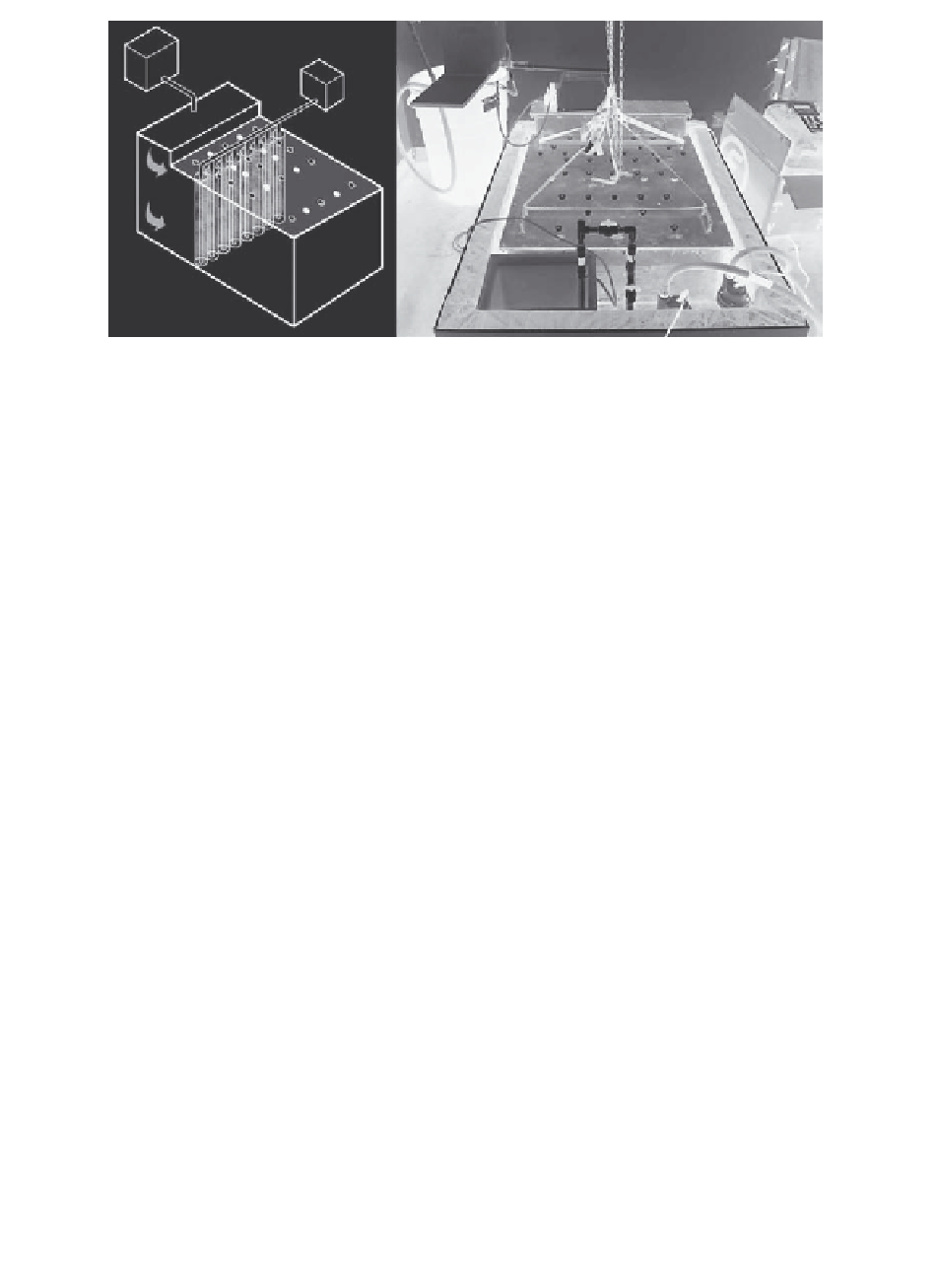Biomedical Engineering Reference
In-Depth Information
FIGURE 5.5
Schematic and picture of 3
1ft
3
rectangular lysimeter utilized by
×
4
×
Cunningham et al. (1997).
discussion, the reader should keep in mind that not only biofilm growth influ-
ences the hydrodynamics of porous media but that the prevailing hydrody-
namic conditions also influence biofilm growth characteristics; that is, it is
likely that, over time, biofilm structure responds to changes in mass trans-
port and adapts by adjusting its structure to ultimately optimize the mass
transport of substrates and products as well as the stability of the biofilm.
This interplay of hydrodynamics and biofilm growth will be discussed in more
detail later.
It is commonly accepted that EPS and the microbial cells themselves,
can affect the hydrodynamics in porous media. Moreover, there is signifi-
cant experimental evidence that biofilms do not always accumulate homoge-
neously in porous media but that there can be significant spatial and temporal
variability.
It has been observed repeatedly that discrete clusters are formed at least
during the initial phase of biofilm accumulation and that the distribution
of biofilms in porous media is influenced by the availability of nutrients, the
effective porous media particle size, and local hydrodynamics (Taylor and Jaffe
1990b; Baveye et al
.
1992; Vandevivere and Baveye 1992b; Rittmann 1993;
Vandevivere 1995; Vandevivere et al
.
1995; Sharp et al
.
1999a; Rowe et al
.
2000; Nam et al
.
2000; Hill and Sleep 2002; Thullner et al
.
2002a; Thullner
et al
.
2002b; Sharp et al
.
2005; Seifert and Engesgaard 2007; Thullner and
Baveye 2008).
Continuous biofilms occasionally form in porous media, but it is often
observed that flow channels and low-permeability zones dominate (Sharp et al
.
1999a, 2005; Stewart and Fogler 2001; Hill and Sleep 2002; Seymour et al
.
2004a, 2007; Viamajala et al
.
2008).

Search WWH ::

Custom Search